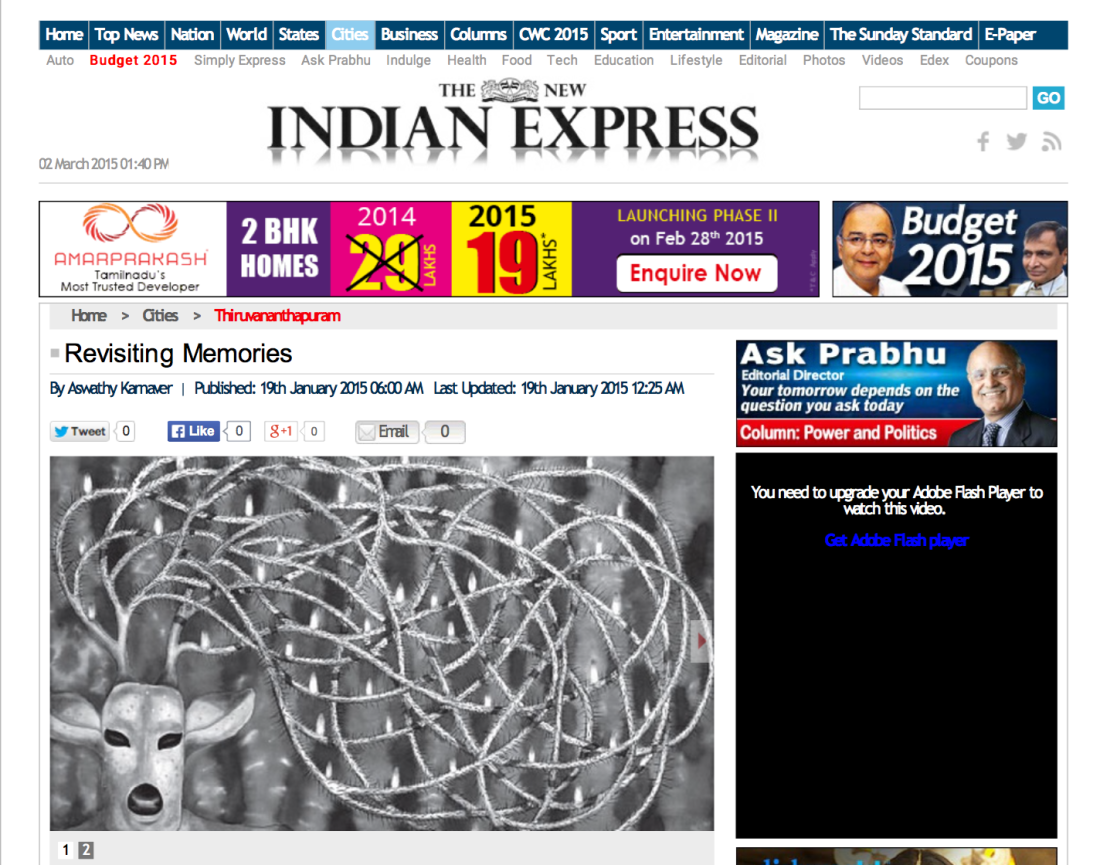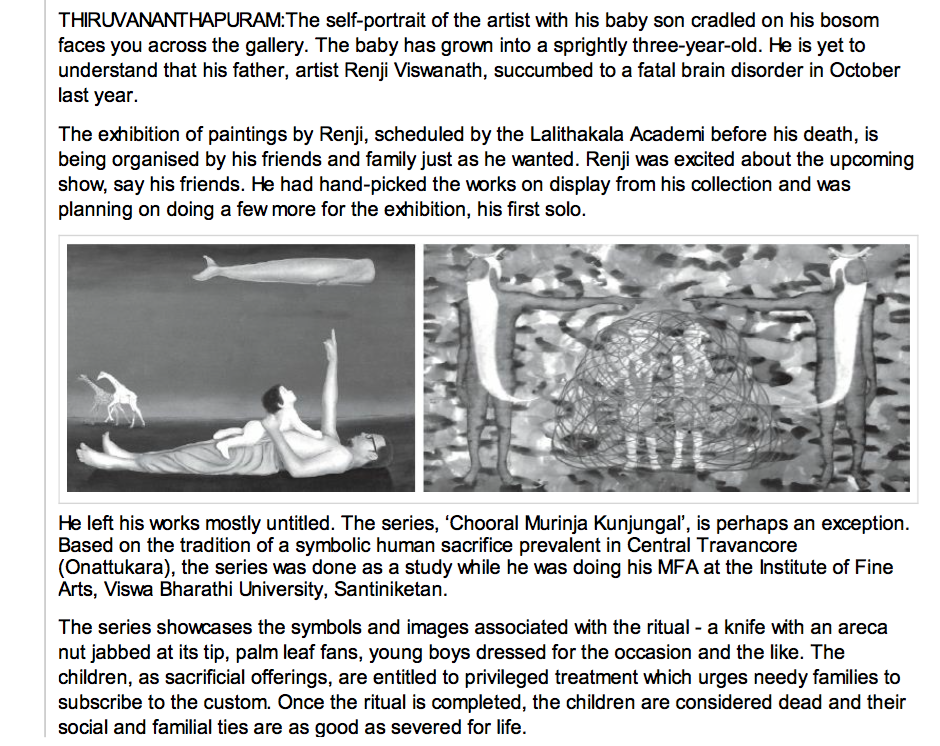Writing by Anudev Manoharan
“The past lives on in art and memory, but it is not static: it shifts and changes as the present throws its shadow backwards. The landscape also changes ,but far more slowly; it is a living link between what we were and what we have become”.
Margaret Drabble (1979, p.270) in A Writer’s Britain: Landscape in Literature referring to Virginia Woolf’s sense of loss of a loved place.
It used to be in the humid afternoons of Santiniketan when we stops our morning session of Painting and starts a drowsy chattering about works done in that day. It will start casual and slowly merge in theme with a controversy in latest art and deal or a hot red exhibition by sanchayanda in experimenta. Subjects was vast like the bhirbhoom landscapes… this compilation of words are based up on renji’s thoughts about his works and my responses to that.
Though the whirled explorations of todays cultural navigations are mainly coursed on the Images of maps and Images of navigators, we used to enquire ourselves about the possibilities of explorations deep into the ever expanding textual and active realities of legible absurdities in the society right in front. I saw his thoughts touched a vernacular view of practice rather than to follow a stereotyped themed curatorial exercise. May be his past from a strong residue of naivety helped him like most of keralite artists who practiced out side Kerala. This naivety I think positively kept him from stereotyping himself from metropolitan notions of contemporariness. On this aspect the training that he got from a strong tradition; to look at art from an alternative way of thought that has been being followed in Mavelikkara RRV College of fine arts helped in forming his basics.
To my surprise, even while painting a series of exotic temple ritual voyeurisms of a Travancore cultural sphere1 he was thinking seriously about our santiniketan(amaar santiniketan…) traditional thought of looking in depth on landscape, rather than politicizing his Images to a commoditized Mumbai gallery piece. The tangled tormented images of Chooral Murinja Kunjungal is a reference I want to use here, the preserved nature of memories about the loss of a loved place is also important when work of art is dealing more on the explorations to an underneath lost culture that lies behind hundreds of years. The local icons of fan, betel leafs ,banana leaf dress, all icons he used were selectively inherited the Lang of the traditional Onattukara Cultural space . So his approach to tense a viewer with strong coded language will work in a way that the outside viewer will either enjoy the momentary pleasure of view or learn the visual language of the elements to read his work. This in terms I think is a victorious smile he always possesses. While studying in santiniketan, though his smile was always easy to translate in to any language, Bengali was way too difficult for him to understand. I felt it was through his coded images in a way he responded to that translatability difficulty. His research in to the evidences of Human sacrificial ceremony and its related social formations in past were being translated in to visual language towards his last days of work. If one looks at the volume he raised in the upper position of Chooral murinja Appoopanmar work one can assume the Wight of the legends/secrets he possessed from those images.
He was well aware of the space and its tranquility of Santiniketan to identify a strong self in a way to re interpret that self as a re-enactment of a more relevant neo avant-garde self. His post graduate studentship seriously took practice with all aspects theoretical backup well maintained by the goodness of the ambience. May be this was the point of departure of my view from his Image making process towards a research scholar in him.
I remember an instance, On the day of my interview, he was sitting with Ajeesh, Rajeev and Nilkanta holding a file in his hands…we started a talk on his work. suddenly he showed me, rarest of a manuscript , a study from 70ies done in madras university about the kuthiyottam that he was reading at that time. That document was extremely difficult to get and a whole story came up on the legend of collecting that text. Kuthiyottam and its associated ceremonies are included in UNESCO’s Intangible Cultural Heritage Chart, but study that penetrates in to the depths of this subject is very rare.
He was a person of memories …who never wanted to lose any moment. Sketch books filled with short notes to remember…books racks filled with journals and magazines.. collected artifacts and manuscripts of people from various streams of life. we all lived happily in his ipad photo stream… never losing a moment.. the text in Renji Viswanath’s works are best termed and reinterpreted in context with the concept of revisited memorial or legacy in constant remembrance.
Notes:
1. It’s a strong criticism we friends put to his face, but I am using it here the way he reacted to this criticism is contextual
Anudev Manoharan
2. ‘cultural landscapes are at the interface of culture and nature, tangible and intangible heritage, biological and cultural diversity – they represent a closely woven net
of relationships, the essence of culture and people’s identity … they are a
symbol of the growing recognition of the fundamental links between local
communities and their heritage, humankind and its natural environment.’ (Rössler 2006)



